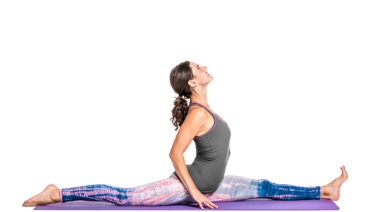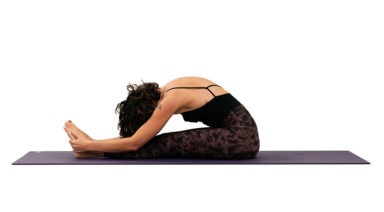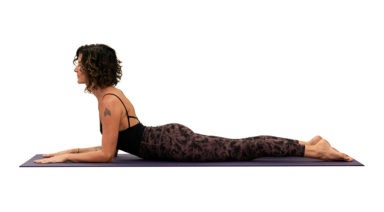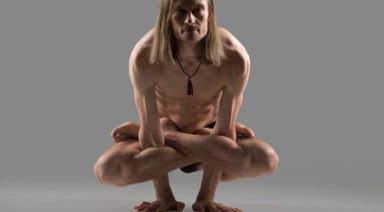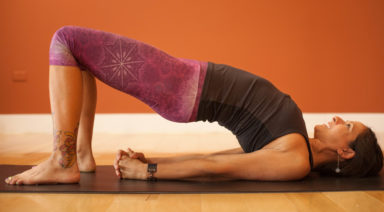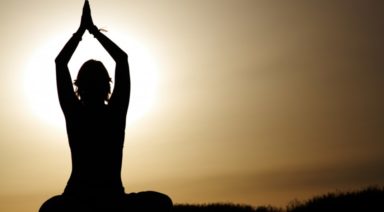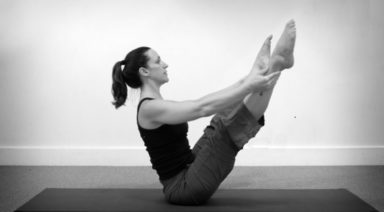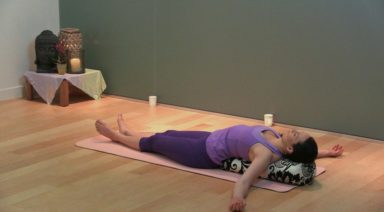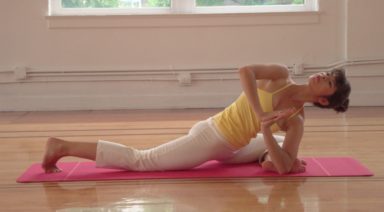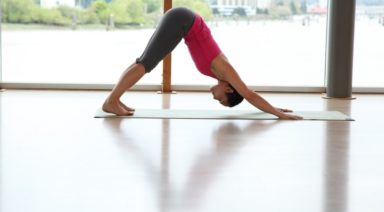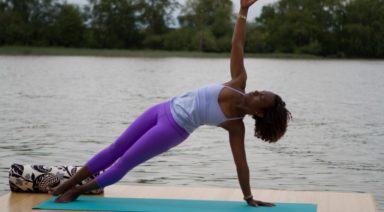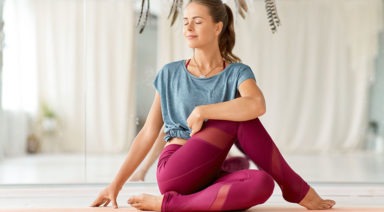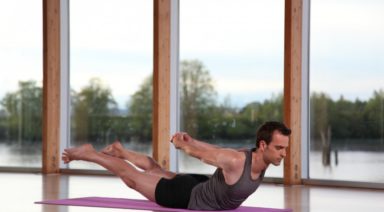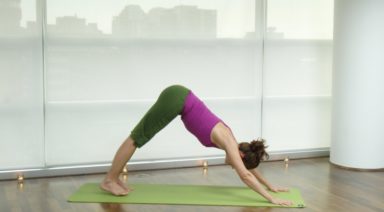Jathara Parivartanasana: Two Knee Spinal Twist Pose
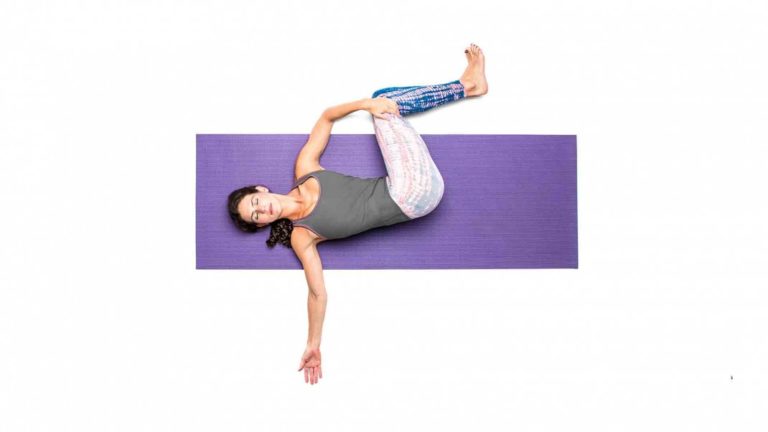
Jathara parivartanasana (ja-THAR-ah pari-var-tan-AHS-anna), also known as the two knee spinal twist pose, is restorative posture that encourages mobility and movement throughout the spine and entire back while improving digestion and stimulating self-esteem and confidence.
Physical Benefits:
- Encourages movement in the spine.
- Stretches the chest and shoulders.
- Thought to improve digestion.
Preparatory Poses:
- Bridge pose | Setu bandhasana
- Wind releasing pose | Pavana muktasana
Sequential Poses:
- Reclining bound angle pose | Supta baddha konasana
- Shoulderstand | Sarvangasana
Counter Poses:
- Savasana
Adjustments/Modifications:
- If your knees do not rest easily on the ground, place your knees and feet on a large pillow.
- If the twist feels too strong in your lower back, first try placing a pillow between your knees or move your knees further away from your head.
- To deepen your twist, place your right hand on your left knee (closest hand) and gently encourage your knees down.
Step-By-Step:
- Begin by lying on your back, feet on the ground.
- Lift your feet off the floor, knees together and feet together and open your arms out to the sides.
- Exhale to slowly lower both legs to the left. Keep your knees at about hip level and at a 90-degree angle.
- Open your arms out to the sides and encourage your right shoulder to soften toward the ground.
- Hold for at least three rounds of breath.
- To exit, press both hands into the floor at shoulder level and contract your abdominal muscles. As you inhale lift your knees and feet up over your chest. Hold onto your knees with both hands.
- As you exhale, draw your thighs down into your chest as you lift your head and chest into the thighs and knees. Avoid lifting your shoulders as the head rises to the knees.
- Lower your head and shoulders to the floor and repeat on the other side.
###Legal Disclaimer Before participating in any exercise program or using any fitness products or services that may be described and/or made accessible in or through the Gaia Website and/or the Services, you should consult with a physician or other healthcare provider. Read more about Gaia’s Terms Of Use.
Hanumanasana: Front Splits Pose

ADJUSTMENTS | BENEFITS | SEQUENCING | SANSKRIT | STEPS
Hanumanasana (hah-new-mahn-AHS-ah-nah) honors the great leap made by Hanuman, the famous monkey god from the Ramayana, across the ocean from India to the mountains of Sri Lanka. Front splits pose demands flexibility, strength, and stability.
Philosophy + Origin
More than just an incredible leap, Hanuman is remembered, celebrated, and worshiped because of his great devotion and courage. To be devoted, one must be bold enough to stand firmly in their beliefs, selflessly serving others and putting others’ needs above their own.
Because of its physical demands, it’s easy to get caught up in “achieving” the outward appearance of the posture. As such, it’s important to keep your ego in check as you dedicate yourself to the posture. Above all, invite kindness and selflessness to flow freely from the posture. As you practice, ask yourself how you can embody Hanuman’s devotion both in your physical yoga practice and your everyday life.


